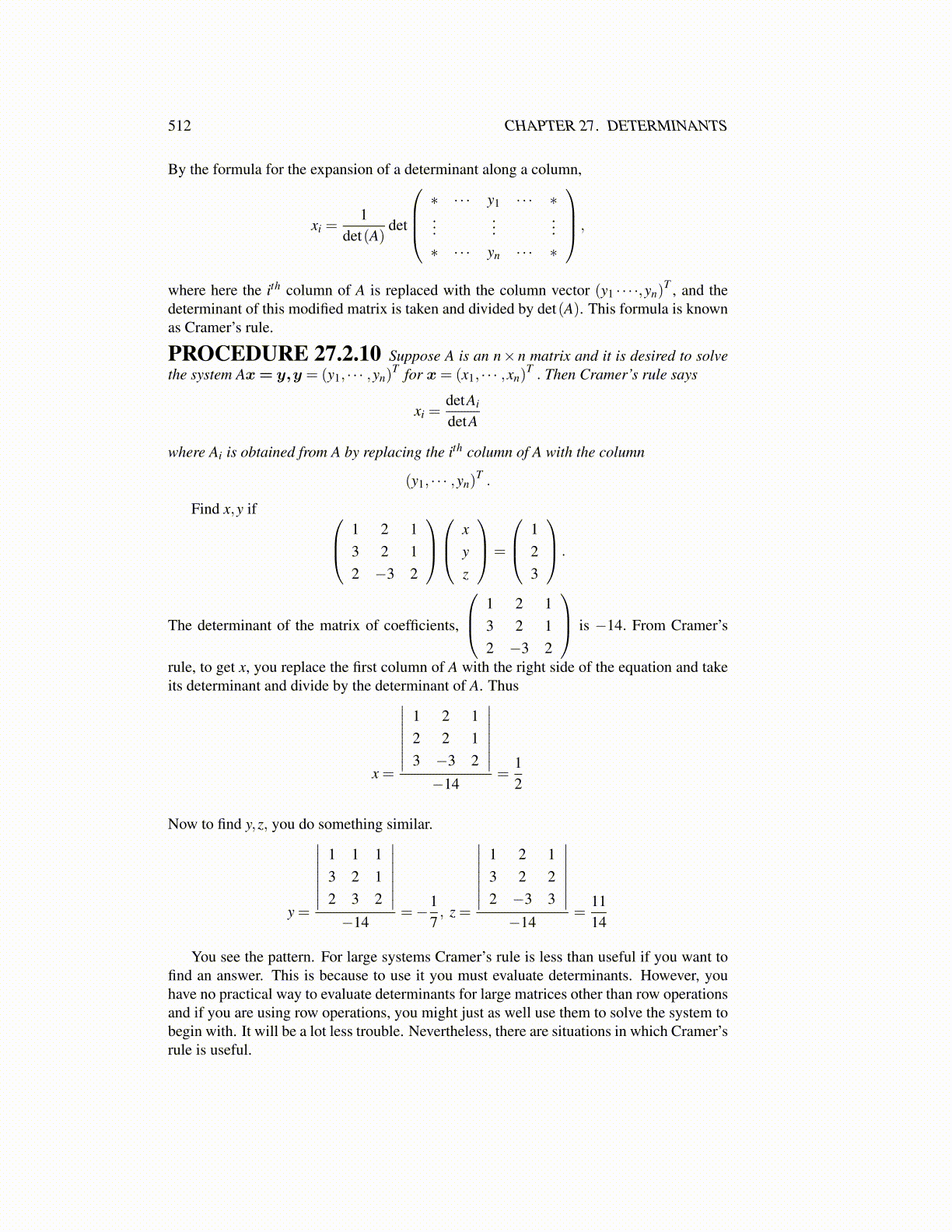
512 CHAPTER 27. DETERMINANTS
By the formula for the expansion of a determinant along a column,
xi =1
det(A)det
∗ · · · y1 · · · ∗...
......
∗ · · · yn · · · ∗
,
where here the ith column of A is replaced with the column vector (y1 · · · ·,yn)T , and the
determinant of this modified matrix is taken and divided by det(A). This formula is knownas Cramer’s rule.
PROCEDURE 27.2.10 Suppose A is an n× n matrix and it is desired to solvethe system Ax= y,y = (y1, · · · ,yn)
T for x= (x1, · · · ,xn)T . Then Cramer’s rule says
xi =detAi
detA
where Ai is obtained from A by replacing the ith column of A with the column
(y1, · · · ,yn)T .
Find x,y if 1 2 13 2 12 −3 2
x
yz
=
123
.
The determinant of the matrix of coefficients,
1 2 13 2 12 −3 2
is −14. From Cramer’s
rule, to get x, you replace the first column of A with the right side of the equation and takeits determinant and divide by the determinant of A. Thus
x =
∣∣∣∣∣∣∣1 2 12 2 13 −3 2
∣∣∣∣∣∣∣−14
=12
Now to find y,z, you do something similar.
y =
∣∣∣∣∣∣∣1 1 13 2 12 3 2
∣∣∣∣∣∣∣−14
=−17, z =
∣∣∣∣∣∣∣1 2 13 2 22 −3 3
∣∣∣∣∣∣∣−14
=1114
You see the pattern. For large systems Cramer’s rule is less than useful if you want tofind an answer. This is because to use it you must evaluate determinants. However, youhave no practical way to evaluate determinants for large matrices other than row operationsand if you are using row operations, you might just as well use them to solve the system tobegin with. It will be a lot less trouble. Nevertheless, there are situations in which Cramer’srule is useful.